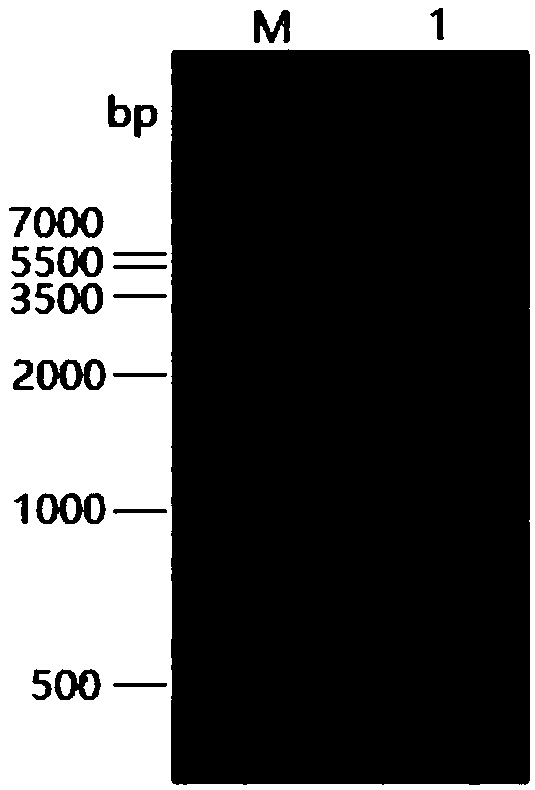Porcine transmissible gastroenteritis virus (TGEV) fusion protein as well as preparation method and application thereof
A fusion protein and Escherichia coli technology, applied in biochemical equipment and methods, viruses, viral peptides, etc., can solve the problems of low drug intake and ineffective penetration of cell membranes
- Summary
- Abstract
- Description
- Claims
- Application Information
AI Technical Summary
Problems solved by technology
Method used
Image
Examples
Embodiment 1
[0043] [Example 1] Preparation of fusion gene S1-TAT
[0044] The S1 gene sequence (KU729220) of TGEV TH-98 strain (KU729220) was obtained from the gene bank of the National Center for Biotechnology (NCBI). The nucleotide sequence connected to TAT at the 3' end is named: S1-TAT, and its sequence is the nucleotide sequence shown in SEQ ID NO.1.
[0045] The recombinant gene S1-TAT was artificially synthesized and connected to the expression vector pGEX-6p-1, that is, the recombinant expression plasmid pGEX-6p-1-S1-TAT was synthesized.
Embodiment 2
[0046] [Example 2] Construction of pGEX-6p-1-S1-TAT engineering bacteria
[0047] Take 1 μl of the recombinant expression plasmid pGEX-6p-1-S1-TAT to transform Escherichia coli E.coli BL21 (DE3) competent cells, and screen out positive transformants through bacterial liquid PCR and gene sequencing identification, and the obtained positive transformants are able to express The recombinant genetic engineering strain E.coli BL21(DE3) (pGEX-6p-1-S1-TAT) of the fusion protein S1-TAT.
[0048] The strain was sent to the China Center for Type Culture Collection on December 12, 2017. It was classified and named: Escherichia coli BL21(DE3)(pGEX-6p-1-S1-TAT)Escherichia coli BL21(DE3)(pGEX-6p -1-S1-TAT), deposit number: CCTCC NO: M 2017785, address: China. Wuhan. Wuhan University.
Embodiment 3
[0049] [Example 3] Expression of Genetic Engineering Fusion Protein S1-TAT
[0050] ① Inoculate a single colony of recombinant genetically engineered strain E.coli BL21(DE3)(pGEX-6p-1-S1-TAT) in 20ml LB liquid medium containing 100μg / ml Amp, and culture overnight at 37°C for 10-12h.
[0051] ②The next day, transfer to 20ml fresh LB liquid medium containing 100μg / ml Amp at a ratio of 1:100, culture at 37°C for about 3 hours until the OD value is about 0.6-0.8, add the inducer IPTG to a final concentration of 0.5mM, induced expression at 250rpm in a shaker at 37°C for 4h.
[0052] ③ Centrifuge the bacterial solution at room temperature for 1-2 minutes, discard the supernatant, resuspend the bacterial cells with an appropriate amount of PBS buffer for the pellet, break with 400W ultrasonication for 3 minutes, break for 3 seconds, stop for 5 seconds, then centrifuge for 2 minutes at room temperature, take 50 μl of the supernatant and mix with The 5×SDS-PAGE loading buffer was mix...
PUM
 Login to View More
Login to View More Abstract
Description
Claims
Application Information
 Login to View More
Login to View More - R&D
- Intellectual Property
- Life Sciences
- Materials
- Tech Scout
- Unparalleled Data Quality
- Higher Quality Content
- 60% Fewer Hallucinations
Browse by: Latest US Patents, China's latest patents, Technical Efficacy Thesaurus, Application Domain, Technology Topic, Popular Technical Reports.
© 2025 PatSnap. All rights reserved.Legal|Privacy policy|Modern Slavery Act Transparency Statement|Sitemap|About US| Contact US: help@patsnap.com



